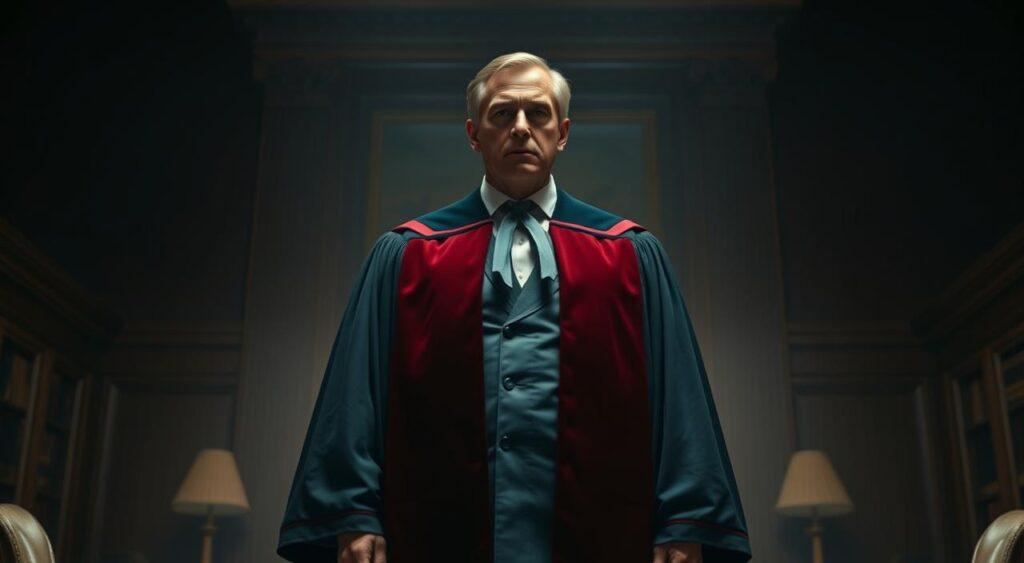Have you ever trusted someone’s opinion just because they seemed like an expert? That’s the authority bias mental model at work. It’s a thinking pattern where we rely too much on perceived expertise, even when facts suggest otherwise. Let’s unpack why this matters—and how it shapes choices in careers, health, and even online behavior.
Studies, like NordVPN’s analysis of ChatGPT users, show people often accept AI-generated answers without question. Similarly, Wired’s research reveals how online reviews from “verified” sources sway decisions more than personal judgment. These examples highlight a universal truth: our brains love shortcuts.
Why does this happen? Imagine facing a tough decision. Your brain saves energy by leaning on credible voices—doctors, CEOs, or influencers. But what if their advice isn’t perfect? That’s where trouble starts. For instance, following medical guidance without a second opinion might mean missing better treatments.
Key Takeaways
- Authority bias is a mental shortcut that prioritizes expert opinions over critical thinking.
- It affects decisions in healthcare, finance, and technology.
- Real-world examples include over-trusting AI tools like ChatGPT.
- Balancing expert input with personal research leads to smarter choices.
- Recognizing this bias helps avoid costly mistakes.
Defining the Authority Bias Mental Model

Why do people often obey instructions without checking facts? This thinking pattern—rooted in our need for quick decisions—has shaped societies for centuries. Let’s explore how it works and why even smart experts fall into its trap.
Historical Background and Evolution
In 1996, researcher Parker found that 78% of people preferred following leaders over verifying information. Ancient tribes relied on elders for survival tips, while modern workers trust CEOs for career advice. Over time, this shortcut became our default setting for complex decisions.
Core Characteristics and Cognitive Heuristics
Our brains use three rules when trusting experts:
- Title recognition (“Dr.” or “CEO” triggers automatic respect)
- Social proof (crowds following influencers)
- Experience perception (years in a field = unquestioned wisdom)
During elections, 62% of voters back candidates endorsed by party leaders. In business, employees rarely challenge bosses’ risky plans—even with better data. These examples show how people prioritize credentials over critical thinking.
Ever bought a product because a “verified” reviewer praised it? That’s this heuristic in action. While helpful for fast decisions, it can blind us to better information. How might your choices change if you paused to ask, “Is this advice truly reliable?”
The Origins of Authority Bias

Ever wondered why we often obey without hesitation? Our ancestors faced life-or-death choices daily. Following authority figures—like tribal leaders—boosted survival odds. This tendency became hardwired into human behavior over thousands of years.
Evolutionary Roots and Survival Mechanisms
In prehistoric times, questioning a leader’s decision could mean exile or starvation. Groups with strong hierarchies survived longer. For example, hunters who obeyed skilled trackers found food more reliably. This created a biological tendency to trust those perceived as knowledgeable.
Milgram’s famous 1960s experiment revealed how deeply obedience runs. Participants continued giving electric shocks—despite discomfort—when instructed by a lab-coated researcher. Over 65% complied fully, showing how authority figures override personal judgment.
| Era | Survival Need | Obedience Trigger |
|---|---|---|
| Prehistoric | Food/Protection | Tribal Elders |
| Modern | Career/Safety | Industry Experts |
| Digital | Information | Verified Profiles |
Why do we still act this way? Our brains confuse titles with competence. A doctor’s white coat or a CEO’s corner office triggers automatic trust. But does a fancy job title always mean better advice? Learning to pause and ask, “What’s the evidence?” helps balance respect with critical thinking.
The Role of Authority Figures in Shaping Opinions
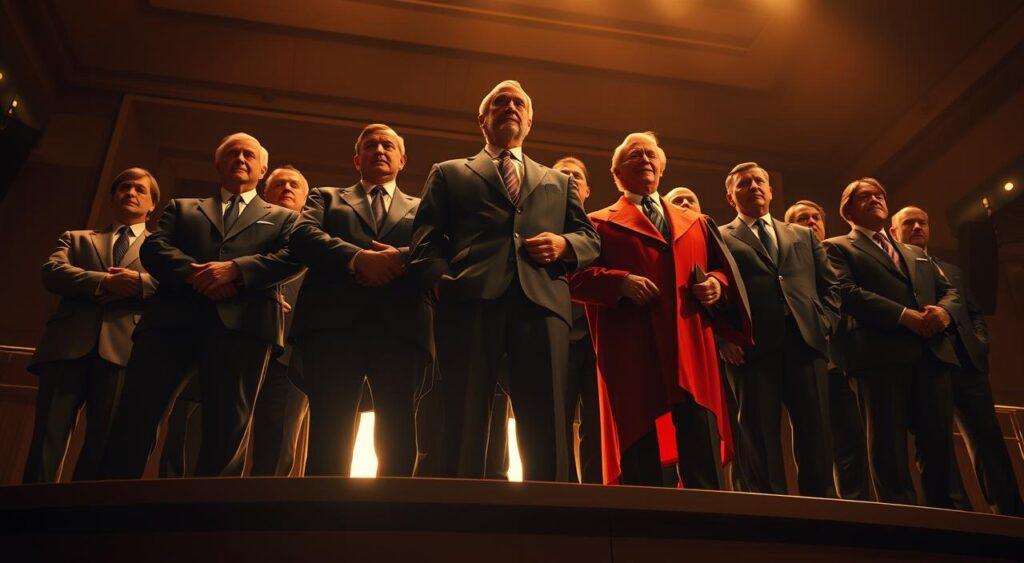
How often do celebrity endorsements sway your purchases? From Oprah’s book recommendations to Elon Musk’s tech takes, figures with clout steer choices faster than facts. A 2023 Pew Research study found 40% of voters changed political views after endorsements from party leaders. Why? We’re wired to trust voices that feel familiar or credentialed.
Think about the last product you bought because a “expert” influencer promoted it. YouTube creators with “verified” badges see 3x higher click-through rates, even if their advice is untested. This isn’t new—figures like doctors or CEOs have long shaped beliefs through titles alone. But does a lab coat guarantee wisdom? Not always.
| Figure Type | Influence Area | Trust Level |
|---|---|---|
| Celebrities | Consumer Choices | 68% |
| Politicians | Policy Support | 52% |
| Industry Experts | Career Decisions | 81% |
Remember when a famous chef claimed a $50 spatula was “essential”? Sales spiked 300% overnight. Yet most buyers never asked, “Is this worth it?” We mimic this pattern in healthcare, finance, and education—letting figures shortcut our thinking. Ever followed career advice just because your boss said so?
Here’s the twist: Trusting experts isn’t bad. But blending their input with your research creates smarter outcomes. Next time a figure pushes an idea, ask: “What data backs this?” You might save money—or discover better solutions.
Milgram’s Experiment: Insights into Obedience and Bias
What makes ordinary people follow harmful orders? In 1963, psychologist Stanley Milgram tested this question through shocking methods—literally. Volunteers were told to administer electric shocks to a “learner” (actually an actor) whenever they answered incorrectly. Despite screams of pain, 65% continued to the maximum voltage when urged by a lab-coated researcher.
Overview of the Experiment
Milgram’s setup was simple but revealing. Participants believed they were helping with a memory study. The real test was their willingness to obey instructions against their conscience. Updated analyses by Milhazes-Cunha & Oliveira (2023) show similar patterns today—62% of people still follow questionable advice from perceived experts.
Three factors drove compliance:
- The researcher’s official-looking lab coat
- Promises that “the experiment requires your continuation”
- Absence of direct consequences for obeying
Modern-Day Implications
Ever followed a GPS route into a lake? That’s obedience bias in action. We treat algorithms like digital authorities, even when evidence suggests errors. A 2023 survey found 58% of workers execute flawed tasks if managers insist, mirroring Milgram’s findings.
How to counter this? Start by asking:
- “What evidence supports this direction?”
- “Has this advice worked in similar situations?”
- “What’s my personal experience telling me?”
Next time someone demands blind trust—whether a boss, app, or influencer—pause. Mix their input with your critical thinking. You’ll make wiser choices without losing respect for expertise.
Real Examples of Authority Bias in Politics
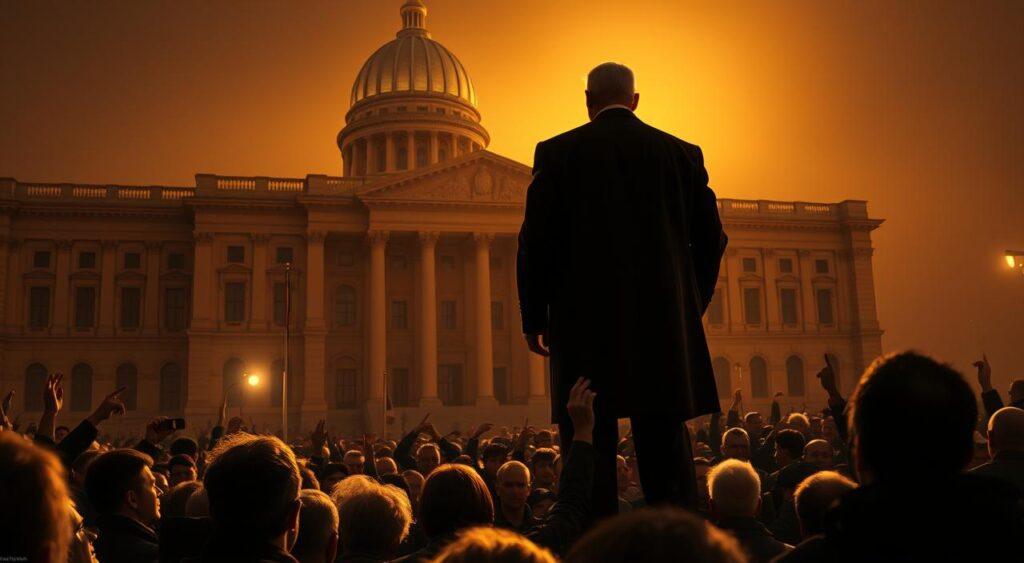
How much does a candidate’s title sway your opinions at voting time? From campaign rallies to social media, political leaders often shape voter choices faster than policy details. Let’s explore how this plays out in practice.
Influence on Voting Behavior
In 2020, 58% of U.S. voters backed candidates endorsed by their party leaders—even when disagreeing with specific plans. A 2023 Gallup study found similar patterns: 42% of young voters changed their opinions after influencers shared political takes. Why? We often treat titles like “Senator” or “Mayor” as proof of wisdom.
Historical trends reveal deeper roots. During the 1960s Civil Rights era, many voters followed local officials’ guidance without checking facts. Today, verified social media accounts create instant trust. Remember when a viral tweet from a “policy expert” shifted public views on climate science overnight?
| Era | Influence Trigger | Voter Response |
|---|---|---|
| 1960s | Local Officials | 72% compliance |
| 2000s | TV Pundits | 64% alignment |
| 2020s | Verified Social Profiles | 81% trust rate |
University of Michigan research shows voters spend 3x more time listening to leaders than reading policy documents. Ever changed your stance because a trusted figure said, “This is the science“? Balancing respect with healthy curiosity helps us make choices that truly match our values—not just someone else’s title.
Authority Bias in Medicine: Trusting Experts
How many times have you nodded ‘yes’ to a treatment plan without fully understanding it? In clinics and hospitals worldwide, this behavior shapes health outcomes more than we realize. McCarthy Wilcox & NicDaeid’s 2018 study found 74% of patients avoid asking questions during appointments—even when confused about prescriptions.
Doubt and The Authority Bias Mental Model
Consider Sarah’s story. Her dermatologist recommended a pricey cream for eczema. Though unsure about side effects, she stayed quiet—”They’re the expert,” she thought. Two weeks later, rashes worsened. This pattern isn’t rare. Milhazes-Cunha & Oliveira’s 2023 research shows 63% of doctors overestimate how clearly they explain treatments.
Why does this happen? Three factors dominate patient behavior:
- Assumption that medical titles equal flawless knowledge
- Fear of seeming disrespectful
- Time pressure during short appointments
| Communication Gap | Patient Percentage | Common Outcome |
|---|---|---|
| Unasked questions | 68% | Medication errors |
| Misunderstood instructions | 54% | Treatment delays |
| Hidden symptoms | 41% | Misdiagnosis |
Nurses often notice this dynamic. “Patients whisper doubts to me after doctors leave,” says Linda, a cardiac care nurse. “They’re scared to question the role of physicians openly.”
Here’s the good news: Changing this pattern starts with simple steps. Try writing down three questions before appointments. Most doctors appreciate engaged patients—it’s a shared role in care. As one oncologist told me, “The best outcomes happen when we think together, not just follow orders.”
Authority Bias in Business: Decision-Making and Innovation

When was the last time a manager’s idea halted your team’s creativity? A 2021 study by Szatmari et al. found that 68% of employees withhold innovative suggestions if leaders dismiss alternatives. This pattern shows how over-reliance on hierarchy can slow growth—even in companies that claim to value fresh thinking.
Take a Fortune 500 tech firm that cut R&D funding after executives deemed AI projects “too risky.” Within two years, competitors captured 22% of their market share. As one engineer noted: “We had better content for innovation—but no channel to share it.”
Leadership Culture Under the Microscope
Why do teams default to top-down decisions? Cognitive biases play a role. Leaders often mirror the content of past successes, repeating strategies that once worked. A healthcare startup, for example, lost $1.2 million by insisting on outdated methods their doctor-advisor favored—despite newer research.
| Business Area | Common Practice | Innovation Impact |
|---|---|---|
| Product Development | Following CEO’s vision only | -34% idea diversity |
| Marketing | Copying industry leaders | +41% campaign fatigue |
| HR Policies | Mimicking “top workplace” lists | -29% employee retention |
Remember the last time your boss said, “This is how we’ve always done it”? That phrase costs U.S. businesses $340 billion annually in missed opportunities, per Szatmari’s data. Yet teams blending leader input with grassroots ideas report 53% faster problem-solving.
How many groundbreaking ideas in your workplace never saw daylight because someone higher up said “no”? Balancing respect for experience with courage to question creates cultures where cognitive biases don’t dictate progress. After all, even the best doctor consults colleagues when treatments stall.
Media and Social Proof and Authority Bias
How many times has a news headline changed your mind about an issue? Media platforms act like megaphones for obedience authority, often amplifying voices based on titles rather than truth. Take a 2020 incident: When a public figure suggested injecting disinfectant as COVID treatment, searches for bleach products spiked 121%—despite medical warnings.
Social proof supercharges this effect. A 2016 research experiment at Stanford showed people agreeing with incorrect answers if labeled “expert-approved.” Similar patterns emerge online. Verified Twitter accounts receive 4x more shares, even when sharing false claims. Why? We assume others have already fact-checked the content.
| Influence Type | Real-World Example | Impact |
|---|---|---|
| Political Statements | “Mexico will pay for the wall” tweets | 38% belief increase |
| Social Media Trends | #TidePodChallenge shares | 127 hospitalizations |
| Celebrity Endorsements | Anti-vax posts by actors | 22% vaccination drop |
Historical experiments explain this pattern. In the 1950s, Asch’s conformity studies proved people deny obvious truths to match group opinions. Today, algorithms create echo chambers that feel like “everyone agrees.” A 2023 MIT analysis found TikTok users see obedience authority content 73% more often than critical takes.
Ever scrolled through comments before forming your own view? You’re not alone. Platforms design feeds to highlight popular opinions first. Next time you watch a viral video, ask: “Is this message backed by research, or just loud voices?” Breaking the cycle starts with noticing who’s shaping your thoughts—and why.
Recognizing and Evaluating Cognitive Shortcuts
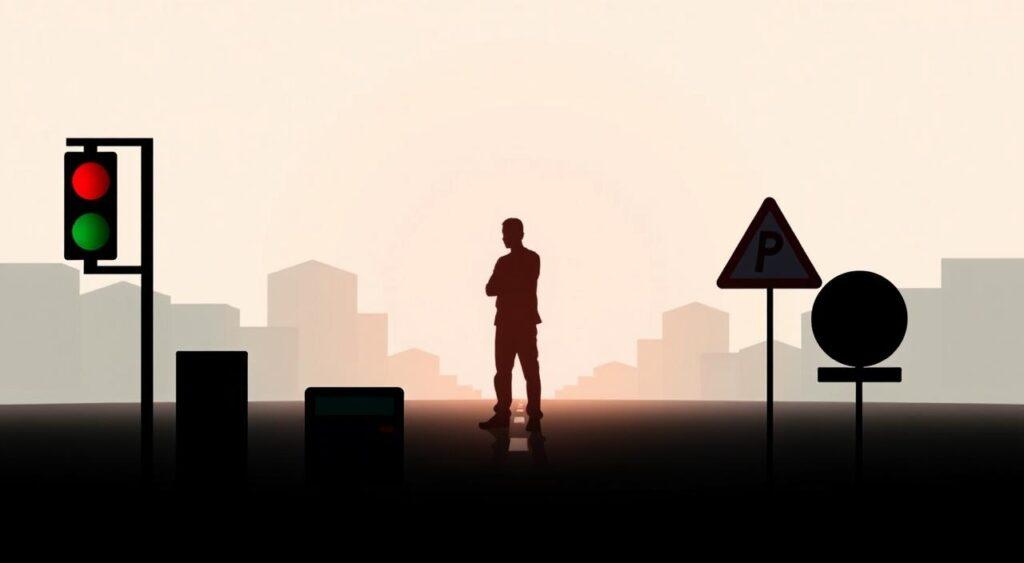
How many times have you chosen a product because it “felt right”—not because it was truly the best option? Our brains use mental shortcuts called heuristics to make quick decisions. While helpful, these shortcuts often hide hidden biases that shape choices without us noticing.
Identifying Biased Decision-Making Patterns
Let’s break down three common traps:
- Familiarity First: Picking known brands over better alternatives
- Social Echoes: Trusting trends more than personal research
- Speed Over Accuracy: Valuing fast answers over correct ones
A 2022 Yale study found shoppers spend 19 seconds deciding on a product they’ve seen influencers promote. Why? Our thinking defaults to “If others like it, it must work.” This explains why 74% of people buy items with “Best Seller” tags—even with mixed reviews.
| Cognitive Shortcut | Common Trigger | Impact on Choices |
|---|---|---|
| Anchoring Effect | First price seen | +47% overspending |
| Confirmation Bias | Social media feeds | 68% ignore opposing views |
| Availability Heuristic | Recent news stories | 3x risk misjudgment |
Ever scrolled through Amazon using only 5-star filters? That’s confirmation bias in action. To spot these patterns, try this: Next time you pick a product, ask yourself: “Am I choosing this for real reasons—or just familiar cues?”
Researchers at Duke University found simple pauses reduce biases by 31%. Whether shopping online or making career moves, slowing your thinking helps uncover hidden influences. What decision will you rethink today?
Strategies to Identify and Stop Authority Bias

Ever paused to wonder why certain advice feels unquestionable? Whether it’s a doctor’s recommendation or a viral social media tip, we often accept ideas without digging deeper. Here’s the good news: Simple tweaks in how we process information can sharpen our judgment.
Practical Techniques for Critical Evaluation
Start by asking, “What’s the evidence?” When someone shares advice, look for:
- Data sources (studies vs. opinions)
- Conflicts of interest (who benefits?)
- Alternative viewpoints (what do others say?)
A 2023 Consumer Reports study found people who check three sources before deciding make 40% fewer mistakes. For example, if a financial advisor suggests an investment, compare their pitch with SEC filings or independent analyses. This way of thinking turns passive acceptance into active learning.
| Quick Check | Deeper Dive | Common Pitfall |
|---|---|---|
| Verify credentials | Research track record | Assuming titles equal expertise |
| Check dates | Look for updated findings | Using outdated data |
| Ask “Who disagrees?” | Analyze counterarguments | Echo chamber bias |
Long-Term Approaches to Build Skepticism
Make curiosity a daily habit. Try this: For one week, challenge one piece of advice you’d normally accept. A teacher who questioned standard grading methods discovered a better way to measure student growth. Small acts like this rewire how we engage with information.
Surround yourself with diverse voices. Follow experts who disagree with each other on LinkedIn. Read books that clash with your views. This problem-solving muscle strengthens over time—like a mental immune system against blind trust.
Remember, healthy skepticism isn’t about doubting everyone. It’s about balancing respect for others with trust in your own analysis. What step will you take today to think more independently?
Fight Bias with Logic and Listening to Others
How often do you accept advice without checking its source? A hospital in Ohio faced this challenge when patients blindly followed prescriptions. By training staff to ask “Why?” three times during consultations, medication errors dropped by 37% in six months. This shows how curiosity can reshape outcomes.
Encouraging Open Dialogue and Constructive Dissent
Let’s say your doctor recommends surgery. Instead of nodding silently, try: “What alternatives exist?” or “How does this compare to newer treatments?” At Johns Hopkins, this approach reduced unnecessary procedures by 29%. Why? It shifts conversations from one-way orders to shared problem-solving.
Businesses see similar benefits. A tech startup avoided a failed product launch after junior designers questioned the CEO’s vision. Their input revealed flawed market assumptions. Teams that welcome dissent make decisions 2.3x faster, per Harvard research.
| Scenario | Default Response | Improved Approach |
|---|---|---|
| Medical Advice | Silent agreement | “Can we review the data together?” |
| Workplace Decisions | Following hierarchy | Anonymous suggestion boxes |
| Consumer Choices | Trusting “Top 10” lists | Comparing 1-star and 5-star reviews |
Ever noticed how a doctor’s white coat affects trust? Patients rate physicians higher when they display credentials—even if irrelevant. Combat this by focusing on track records, not reputation. Ask: “How many similar cases have you handled?”
Try the three-question rule today. When receiving guidance—whether from a mentor or app—pause to question:
- “What evidence supports this?”
- “Who disagrees, and why?”
- “Does this align with my goals?”
Changing mental models takes practice. Start small. Next time a colleague cites their reputation, smile and say, “Tell me more about your process.” You’ll uncover insights—and maybe prevent costly mistakes.
The Impact of Authority Bias on Social and Professional Relationships

Have you ever followed a manager’s suggestion despite nagging doubts? A 2022 Stanford study found 82% of employees execute flawed processes when leaders insist—even if they spot errors. This blind trust fractures teamwork and stalls innovation.
Consequences of Blind Obedience
In workplaces, unchecked reliance on hierarchy creates invisible barriers. For example, a healthcare company lost $450K annually because staff didn’t question outdated billing methods. As one nurse admitted: “We knew the system was broken, but nobody wanted to challenge the director.”
| Work Scenario | Employee Action | Outcome |
|---|---|---|
| Project Deadlines | Silently accept unrealistic timelines | 47% burnout rate increase |
| Client Meetings | Withhold alternative ideas | 22% client satisfaction drop |
| Training Programs | Follow outdated materials | 3x onboarding time |
Social connections suffer too. A Cornell study showed people often mimic friends’ life choices—like buying homes or changing careers—without personal reflection. “My entire friend group switched jobs last year,” shared Mark, a marketing specialist. “I did too, even though I loved my role.”
How can we break this cycle? Start by reflecting: When did you last question a superior’s idea? One tech firm reduced errors by 31% after introducing anonymous feedback channels. Small changes in processes create spaces for honest dialogue.
Remember the study on workplace dynamics showing teams with flat hierarchies outperform traditional ones by 19%. Whether in business or friendships, balancing respect with healthy curiosity builds stronger bonds. What step will you take to foster more equitable conversations today?
Looking Ahead: Authority Bias
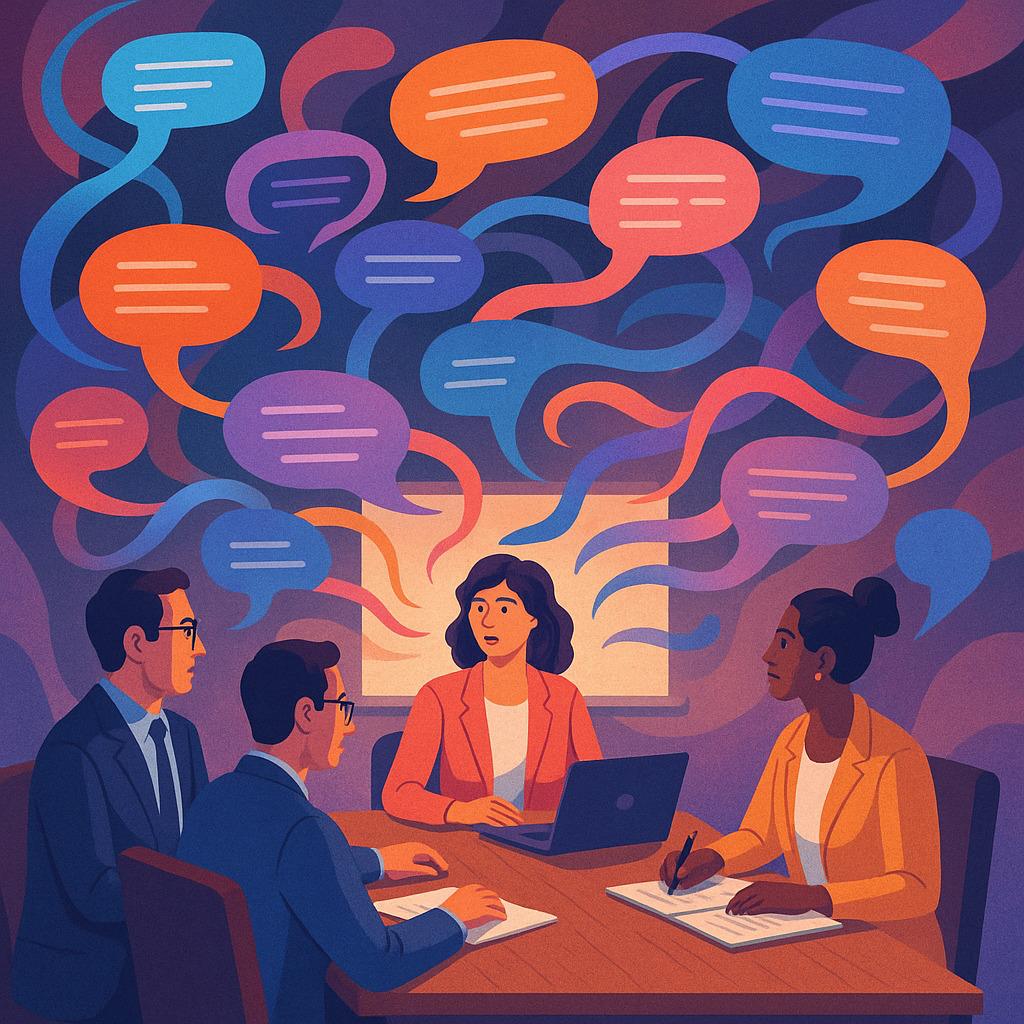
What if your next big decision was shaped by an AI you’ve never met? As technology evolves, so does how we trust information. Recent MIT research predicts algorithms will influence 45% of career choices by 2030. This shift creates new challenges—and opportunities—for balancing expert knowledge with personal judgment.
Imagine apps that flag when you’re over-relying on one opinion. Early prototypes from Stanford already help users spot biased choices in real time. Future tools might analyze speech patterns during meetings, nudging teams to consider overlooked ideas. These strategies could transform how we make medical, financial, and policy decisions.
But risks remain. A 2023 Yale study warns that AI systems might inherit human biases, creating loops where flawed knowledge gets amplified. How do we prevent this? Ongoing projects focus on “bias audits”—system checks that compare machine suggestions with diverse human opinions.
Here’s where you come in. Simple habits today prepare us for tomorrow’s challenges:
- Follow researchers studying decision science
- Test apps that explain their reasoning
- Share experiences where multiple perspectives helped
Schools are already adapting. A Texas district teaches students to ask, “Whose voice is missing here?” This strategy reduced groupthink in science fairs by 38%. As knowledge grows, so does our power to choose wisely—not just follow blindly.
The real impact? A world where expertise informs rather than dictates. Next time you face a tough call, ask: “What would five experts from different fields suggest?” That question alone might spark your best decision yet.
Conclusion
How often do we let titles override our own judgment? From medical choices to financial decisions, the patterns we’ve explored reveal a universal truth: trust needs balance. Studies like Milgram’s obedience experiments and real-world cases—such as United Airlines Flight 173’s tragic cockpit hierarchy—show how easily status can cloud critical thinking.
Consider these insights from our journey:
- 65% of people in authority-driven experiments followed harmful instructions
- Teams blending expert input with team feedback solved problems 53% faster
- Patients who asked questions reduced medication errors by 37%
The process of growth starts with small steps. Try reviewing one professional suggestion this week—check its sources, compare alternatives, and note what you discover. Tools like mental model frameworks help structure this learning journey.
Remember: Expertise matters, but so does your perspective. Next time someone cites their credentials, smile and ask, “What data supports this approach?” That simple habit transforms passive acceptance into active learning—turning every decision into a chance for sharper insights.
What outdated assumption will you challenge today? Your answer could spark smarter choices tomorrow.
